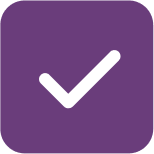Main Menu

The reach of social media makes it the ideal tool to communicate your message and connect with your audience, and there are countless ways it can be used for KT. Social media has been used to disseminate knowledge to patients, exchange knowledge in online communities of practice, engage patients, and educate students and health professionals. However, what makes social media so advantageous is also what makes it difficult to use effectively. Grabbing and keeping the attention of your target audience, when they have thousands of other options, takes skill and planning.
Recently, the Alberta SPOR SUPPORT Unit Learning Health System team (formerly known as the Alberta SPOR SUPPORT Unit Knowledge Translation Platform) led a study to collect evidence on social media best practices for KT in health. Their investigation found that the time and planning needed to develop and execute a successful social media strategy is no different than for any other KT strategy. In their recent publication they highlight key points to consider if you are planning on using social media as a KT tool.
Why do you want to use social media? Are you trying to communicate your research evidence, educate students, engage with patients, or facilitate knowledge exchange within a community? When you define your goals, be as specific as possible as they will inform all the other steps in your social media strategy. Having articulated goals will help you assess whether or not those goals are attainable with the resources you have. Clear goals also make it easier to develop an evaluation plan to determine the success of your efforts, and make adjustments as needed during implementation.
It is also important to choose and follow a suitable theory/model/framework that fits your specific goals. While there is no framework specifically for using social media, there are many that are already used in other health KT strategies such as the knowledge-to-action cycle or the behavior change wheel.
Who do you want to engage by using social media? Do your motivations match their concerns? What type of language do you need to use when engaging with your audience? What social media channels do members of your target audience use, and what types of messaging do they engage with the most? An excellent way to get the answers to many of these questions is to partner with people from your audience. Their expertise will help to ensure that your messaging resonates with them.
Another helpful exercise is to start actively engaging on platforms and in groups that already exist for your particular audience. Not only will this help you understand them, but the community members will start to recognize you when you regularly share, comment on, and participate in their dialogues. This early online relationship building will be of value once you start your own social media initiative and are looking for active participants. As well, you will learn all the important social filters (e.g. hashtags, influencers) you need to include in your messaging to draw in more participants.
There are a number of different social media platforms (e.g. Facebook, Twitter, Instagram), each of which has its own characteristics. It’s easy to give in to early enthusiasm and jump headfirst on to multiple platforms. However, it is difficult to manage multiple platforms well, especially if you are not an expert.Start small and choose only one or two platforms to support your KT. Your choice of platform should be informed by the goals you want to achieve and the needs of your audience. The exception to this rule is if you have a dedicated team of people or if you have the resources to hire a social media communications specialist. If you are lucky enough to have these resources, it is important that your team be coordinated, have a strategy, and that each team member has specific tasks for which they are responsible.
Each social media platform is used by audiences for different reasons based on the platform’s unique interface and capabilities. If you want to engage with patients and understand their stories, Facebook is one of the few platforms that facilitates private groups and it does not have character limits. Twitter and LinkedIn work better for engaging colleagues and maintaining communities of practice. If your goal is to teach skills to medical students, you might want to employ YouTube videos. Regardless, it’s a good idea here to take the advice of your end-user advisors as they will know which platform your audience will engage with the most. As well, take into account the resources and time you have at hand. Developing good content for some platforms is more time and equipment intensive (e.g. Youtube, podcasts) than others.
When an individual is confident that the content they are reading will consistently match their needs or interests, they will be more inclined to return for more. Therefore, it is important that you understand your social media goals and carefully tailor your content to be focused and consistent. The choice of your platform will determine how frequently you need to post material and the length of your messages. Twitter is fast-paced and requires the most frequent engagement compared to other platforms.
Determine how often you need to communicate with your audience ahead of time, set a schedule, and stick to it. The general rule of thumb is that the more frequently you post, the more success you will have in reaching your audience. If you are only engaging bi-monthly or monthly through a blog, ensure that your audience knows when to expect your messaging, and always try to fulfill that expectation. Your audience will stop engaging with your social media content if they are unsure you are still live, or if they don’t see it because it is released too sporadically.
People are selective about what they choose to connect with online. Consider whether or not you have the skills needed to produce content that will be engaging for your audience. You don’t want to be mid-way through your project and realize you need to hire a graphic artist. Understanding what your audience needs and what type of content they are drawn to will inform you of what skills will be needed for optimal success. If financial constraints are a barrier, you may have to create opportunities to enlist creative students or colleagues. Another avenue is to affiliate yourself with a network that shares similar goals but has more social media expertise.
Once you have developed your social media strategy, you will be able to determine whether or not it will require the full time attention of a staff member or student. The time needed for a social media campaign will be dependent on your goals, how many platforms you are using, the frequency and complexity of your content, whether or not you are collecting and analyzing data, and the evaluation plan you are using. If you are using your social media platform to collect data on patients or focus groups, be aware that getting ethics approval may be complicated and time-consuming. You should contact your institution’s ethics board for clarification.
The best time to develop your evaluation plan is before you launch your strategy or campaign. Not only do your goals inform the evaluation plan, but the evaluation plan will inform you whether or not your goals are attainable or measurable.
Frequent checks of your platform’s analytics can be time-consuming, but they allow you to monitor what your audience is engaging with so that you can plan for future content that is effective. For most social media platforms, you will be limited to the analytics available which provide quantitative values for accessibility, engagement, and spread. Analytics, however, are unable to inform you about the influence of your messaging on factors such as health outcomes or built knowledge. There are times where you can measure these types of impact, such as when you are engaging patients within a private Facebook community. In these instances, it is advised that you tread carefully and ask the community members, or a community advocate, what types of evaluation procedures they would feel comfortable with. This action will cultivate trust with the membership who might otherwise see your presence as intrusive. Co-designing the surveys and interviews with the community, or a knowledgeable advocate, will also help to prevent feelings of unease from interfering with the accuracy of your qualitative data.
The potential for social media use in KT is huge. However, the ease at which we consume social media can lure us into a false sense that it is easy to produce and manage engaging content. Nevertheless, it is a doable option for any researcher or clinician if they take the time to clearly define their goals, understand their target audience, and plan according to the resources they have.
Although most of the tips and tricks highlighted here are from the AbSPORU’s recent publication, some of them came from this excellent webinar given by Dr. David J. Phipps, Assistant Vice President Research Strategy and Impact at York University, for KT Alberta back in 2015. Watch the entire webinar to get more valuable advice.
Krista Jensen, a Knowledge Mobilizer also at York University, gives excellent and very specific advice in this recent webinar.
Knowledge Nudge has also published some excellent blog posts on using social media for KT. These blog posts can be found here, here, here, and here! As well, here is a great info-poster from Alberta Health Services and the Alberta Addiction and Mental Health Research Partnership Program.
Let us know how you want to stay connected


 News + Events
News + Events

 Patient Partner Research Opportunities
Patient Partner Research Opportunities

 I agree to receive occasional emails from AbSPORU.
I agree to receive occasional emails from AbSPORU.University of Calgary Foothills Campus
3330 Hospital Dr NW
Calgary, AB T2N 4N1
University of Alberta North Campus
Edmonton Clinic Health Academy (ECHA)
11405 87 Ave NW
Edmonton, AB T6G 1C9
The Alberta SPOR SUPPORT Unit operates on and acknowledges the lands that are the traditional and ancestral territory of many peoples, presently subject to Treaties 6, 7, and 8. Namely: the Blackfoot Confederacy – Kainai, Piikani, and Siksika – the Cree, Dene, Saulteaux, Nakota Sioux, Stoney Nakoda, and the Tsuu T’ina Nation and the Métis People of Alberta. This includes the Métis Settlements and the Métis Nation of Alberta. We acknowledge the many First Nations, Métis and Inuit who have lived in and cared for these lands for generations. We make this acknowledgment as a reaffirmation of our shared commitment towards reconciliation, and as part of AbSPORU’s mandate towards fostering health system transformation.
© 2025 AbSPORU